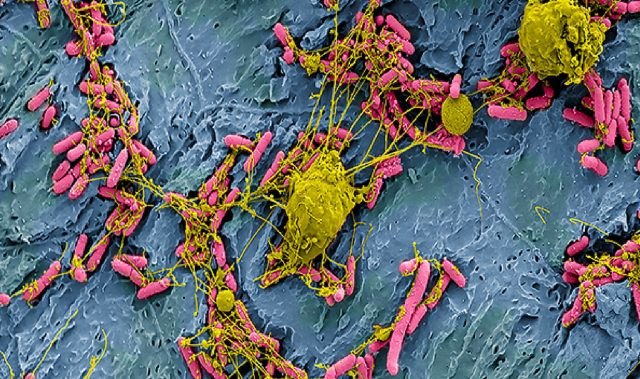
AsianScientist (Jan. 27, 2015) – In work published in Scientific Reports, a group of researchers led by Jo-Ann Chuah and Keiji Numata of the RIKEN Center for Sustainable Resource Science have devised a new strategy for selectively delivering genes into the mitochondria of plant cells by using a simple combination of cell-penetrating and mitochondria-targeting peptides.
This work, done in cooperation with Keio University and Utsunomiya University, lays the groundwork for the rational design of peptide-based gene carriers with the potential to create a new field of “mitochondria engineering,” which could enable the creation of mitochondria-based plant cell factories for the creation of bio-polymers and bio-fuels.
Plant cells are potential hosts that can be used for the mass production of medicinal compounds, recombinant proteins, flavors, fragrances, and colorants—none of which can be produced by microbial cells or chemical synthesis, but they must be modified to become factories.
In the past, efforts have concentrated on modifying the genes in the plant nucleus, but the RIKEN team decided to focus efforts on mitochondria—energy factories that play a fundamental role in a plants metabolism—as this could open new avenues for the study and manipulation of essential physiological and biochemical processes.
However, modifying mitochondria—which are small, have a double membrane and are found in large numbers in cells—has proven challenging. Until now, this milestone had not been accomplished for any living vascular plant. Numata and his group decided to focus on peptides—highly versatile and efficient transporters that have the capacity to pass through membranes—to try to insert external DNA into mitochondria in plant cells. They had previously observed the excellent target specificity of using peptide gene delivery to tumor cells in animals, and decided to develop a peptide-based carrier for delivery of genes specifically to plant mitochondria.
The team began by identifying a mitochondria-targeting component derived from a yeast oxidase and took on the task of developing a method for targeted gene delivery to mitochondria. A complex of the mitochondria-targeting component and a plasmid encoding the detector Renilla luciferase enzyme, were introduced into the leaves of the model plant Arabidopsis thaliana.
Though these efforts were partly successful, the proportion of transfected mitochondria was not very high, leading the team to attempt a new strategy: using the net negative surface charge of the complex, to use a cell-penetrating peptide along with the mitochondria-targeting peptide. They found that this significantly improved the performance of the plasmid carrier. Low concentrations of peptides were sufficient to deliver DNA into the mitochondria, and expression of imported DNA reached detectable levels within a short incubation period of just 12 hours.
According to Chuah, “We were able to show transfection of intact plant mitochondria, and we are now looking forward to developing more efficient and stable transformation strategies.”
Numata, head of the Enzyme Research Team in the RIKEN Center for Sustainable Resource Science, said, “We will work toward creating a peptide library with modified peptide sequences to make better peptides for a variety of selection and screening strategies that can be applied to other cells like chloroplasts, other plants including crops and even animal mitochondria, potentially giving us the ability to create a new and powerful genetic engineering technology and redefine the boundaries of biological research. Using these factories to produce bioplastics, for example, would be an exciting development.”
The article can be found at: Chuah et al. (2015) Gene Introduction Into the Mitochondria of Arabidopsis thaliana via Peptide-based Carriers.
—–
Source: RIKEN.
Disclaimer: This article does not necessarily reflect the views of AsianScientist or its staff.












